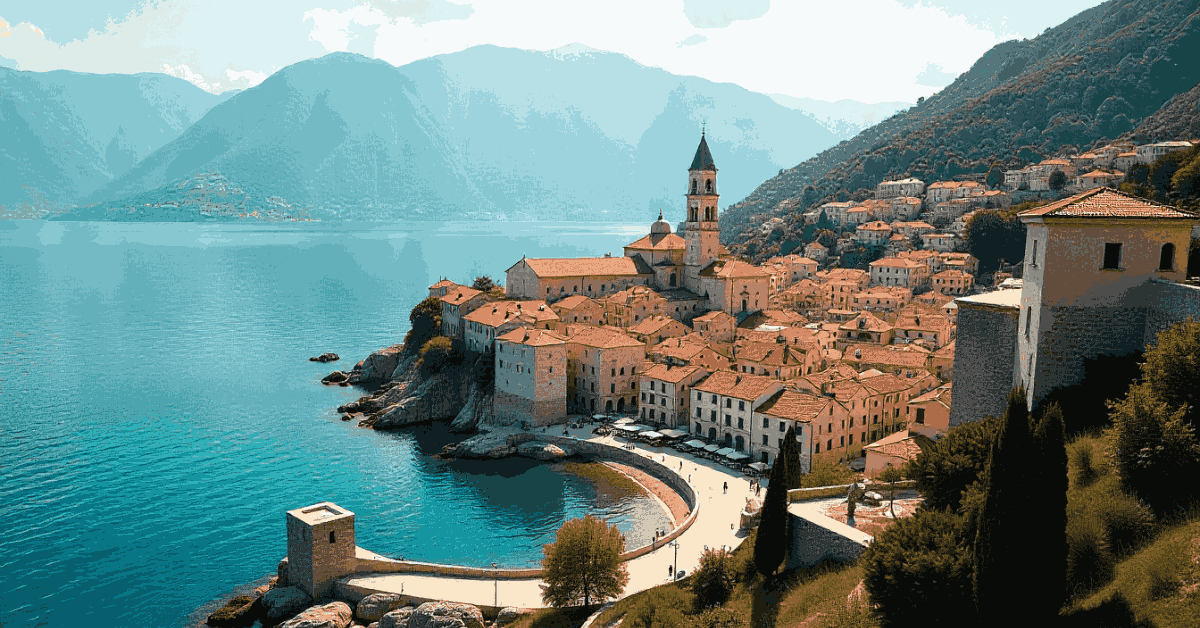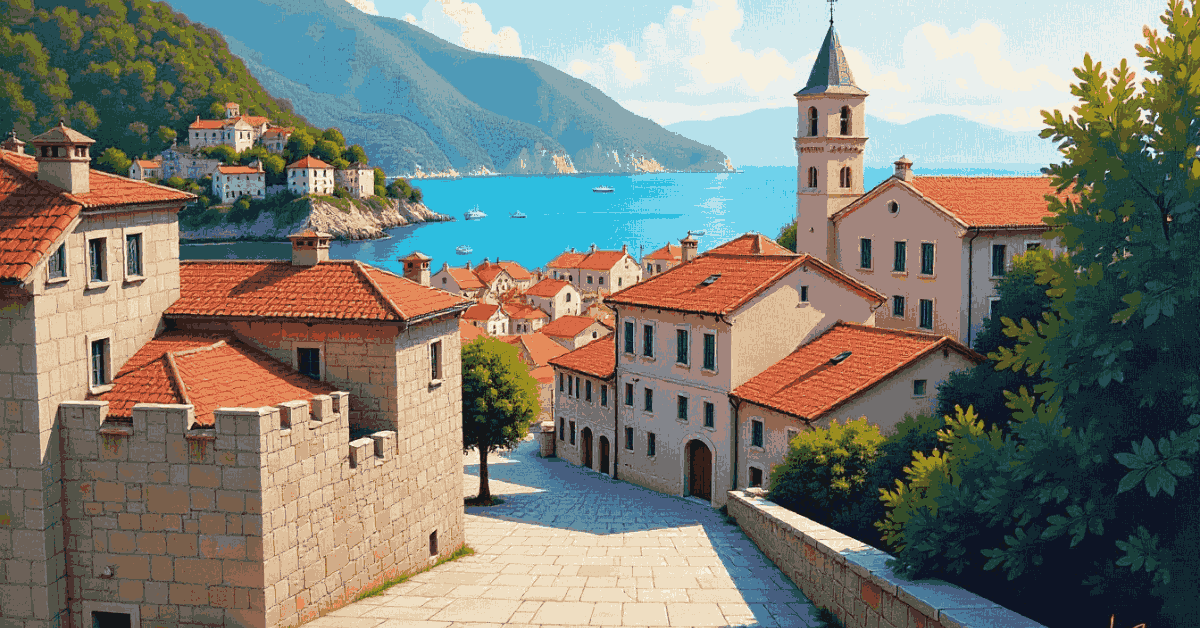introduction
Tucked between dramatic mountains and the teal-tinted Bay of Kotor, Kotora Melnkalne is one of Montenegro’s most magnetic destinations—a place where medieval architecture, breathtaking views, and Adriatic culture converge. Often described as the heartbeat of Montenegrin heritage, it offers far more than Instagrammable backdrops—it’s a living timeline of empires, craftsmanship, and relaxed Mediterranean life.
Whether you’re exploring UNESCO-protected Old Town streets, sailing through the fjord-like bay, or sipping espresso in a stone-paved alleyway, kotora melnkalne delivers an immersive travel experience that blends authentic culture, outdoor adventure, and old-world luxury.
In this 2025 travel guide, we’ll explore everything from must-see attractions and local dishes to off-the-beaten-path experiences, helping you plan the perfect trip to one of the Balkans’ most underrated regions.
Where Exactly Is Kotora Melnkalne?
Kotora Melnkalne refers to the historic town of Kotor in Montenegro—nestled in the southern Balkans along the Adriatic Sea. Though fictional or alternate-sounding, the phrase captures the character of this coastal region, known for its fortified medieval town, cobblestone paths, and deep-rooted Montenegrin culture.
Fast Facts:
- Country: Montenegro
- UNESCO World Heritage Site since 1979
- Language: Montenegrin (English is widely spoken in tourism areas)
- Currency: Euro (€)
Coordinates: 42.4247° N, 18.7712° E
Wellness & Slow Travel in Kotora Melnkalne
For travelers seeking serenity, Kotora Melnkalne offers the perfect setting to embrace the rising trend of wellness and slow travel. Surrounded by dramatic mountains, peaceful coastal walks, and tranquil alleyways, this historic town invites visitors to disconnect from the hurried pace of modern life. More than just a visual retreat, Kotora nurtures holistic well-being through its natural environment, authentic connections, and cultural depth.
A Brief History of Kotor, Montenegro

Kotor’s story begins in the Roman era, overtaken later by Byzantines, Venetians, and Ottomans. Every wave of conquerors left its imprint—from medieval cathedrals and Venetian walls to Ottoman door designs and Austro-Hungarian street plans.
Key Historical Periods:
- Roman settlement (2nd century BC)
- Venetian rule (1420–1797)
- Austro-Hungarian protectorate (19th century)
- Yugoslavia & Post-Independence Montenegro
Today, Kotor Old Town is a preserved maze of narrow alleyways, fortified walls, and cultural pride.
Best Time to Visit Kotora Melnkalne
The destination sees the most visitors during the summer, but shoulder seasons offer a more relaxed experience.
| Season | Weather | Highlights | Travel Tip |
| Spring (Apr–May) | Mild, blooming | Fewer crowds, festivals | Ideal for hiking |
| Summer (Jun–Aug) | Warm, busy | Adriatic sailing, nightlife | Book early |
| Fall (Sep–Oct) | Crisp, golden | Wine harvest, cultural events | Best photos |
| Winter (Nov–Feb) | Rainy, quiet | Budget stays, local feels | Bring layers |
Top Attractions in Kotora Melnkalne
Exploring Kotora Melnkalne is like stepping into a living museum, where every street corner tells a story. One of the most iconic experiences is climbing the Kotor Fortress, a steep but rewarding hike that offers panoramic views of the Bay of Kotor and surrounding mountains—perfect for sunset seekers and photo lovers alike. The heart of the city lies in the Old Town (Stari Grad), where winding medieval alleyways, cozy cafés, and historic churches create a timeless atmosphere. Just beyond, the Bay of Kotor invites travelers to embark on boat tours, explore tiny islands, or relax along the waterfront with sweeping, fjord-like views.
| Attraction | Why You’ll Love It |
| Kotor Fortress | Epic climb, panoramic views |
| Old Town (Stari Grad) | Medieval alleyways, historic churches |
| Bay of Kotor (Boka Bay) | Boat tours, island visits, fjord-like views |
| St. Tryphon Cathedral | Romanesque architecture, relics |
| Clock Tower Square | Cafés, street performers, social life |
Don’t miss the Kotor Cats Museum—a quirky spot celebrating the city’s furry residents.
Hidden Gems Beyond the Tourist Trail
Want something deeper than postcard views?
Explore:
- Njeguši Village: Birthplace of Montenegro’s royal dynasty, known for smoked ham (pršut) and cheese.
- Vrmac Ridge Trail: Hike from Kotor to Tivat with panoramic mountain and sea views.
- Local Wine Cellars: Family-owned vineyards that offer tastings and olive oil pairings.
- Perast’s Islands: Two islets worth visiting—Our Lady of the Rocks and St. George, accessible only by boat.
Cultural Etiquette and Local Customs
Understanding local norms enhances your experience:
- Greetings: Shaking hands or cheek kisses; always greet with a smile.
- Dining: Tip 10% in restaurants; it’s appreciated, not mandatory.
- Respect Religion: Many churches require modest clothing inside.
- Language Note: “Hvala” means thank you; “Zdravo” means hello.
Embrace the culture—don’t just observe, participate.
Food and Drink You Must Try in Kotora Melnkalne
| Dish / Drink | Description |
| Cevapi | Grilled sausages in flatbread |
| Black Risotto | Squid ink rice with seafood |
| Njeguši Ham | Smoked ham from local mountain village |
| Rakija | Potent homemade fruit brandy |
| Palačinke | Balkan-style crepes with jam or Nutella |
Don’t forget strong, dark Montenegrin coffee—served unfiltered and super rich.
Best Day Trips Around Kotora Melnkalne
When visiting Kotora Melnkalne, its surrounding towns and natural landmarks offer incredible day trip opportunities that allow travelers to experience the full beauty of Montenegro. Just a short coastal drive away, Perast enchants visitors with its baroque architecture and the fairy-tale island of Our Lady of the Rocks, where local legend and stunning views meet in perfect harmony. For beach lovers and social explorers, Budva is a must. Known for its golden stretches of sand, lively cafes, and an ancient walled city, it’s ideal for those craving both history and a taste of Montenegro’s energetic seaside vibe.
| Destination | Time from Kotor | Why Visit |
| Tivat | 15 mins | Luxury marina, nightlife |
| Budva | 30 mins | Beaches, historic center |
| Lovćen NP | 1 hour | Mausoleum, mountain trails |
| Cetinje | 1.5 hours | Cultural capital, royal history |
Local buses run regularly, or hire a driver for full-day adventures.
How to Travel on a Budget (LessInvest Travel Tips)
Here’s how to visit Kotor affordably, inspired by the LessInvest ethos of spending less and investing more.
Budget Tips:
- Stay in local guesthouses instead of hotels
- Pack snacks—market food is cheap and tasty.
- Use public buses or shared taxis
- Free walking tours in Old Town (tip-based)
- Travel in shoulder seasons (spring/fall)
Save your money for experiences—not overpriced accommodations.
Where to Stay: Best Hotels, Hostels, and Rentals
| Type | Name | Highlights |
| Budget Hostel | Old Town Hostel Kotor | Backpacker vibe, central |
| Mid-Range Hotel | Astoria Hotel Kotor | Modern rooms in Old Town |
| Luxury Stay | Hotel Forza Terra | Bay views, spa + fine dining |
| Rental Option | Airbnb Seaview Loft | Full kitchen, local charm |
FAQs
Is Kotora Melnkalne the same as Kotor, Montenegro?
Yes, it’s an alternate spelling or stylization of Kotor, located on the Adriatic coast.
Is it safe for solo travelers?
Absolutely. It’s one of the safest Balkan destinations.
Do they speak English there?
Yes, especially in tourist areas, though basic Montenegrin is appreciated.
How long should I stay in Kotor?
3–4 days is ideal to explore Old Town, do a day trip, and relax.
Do U.S. citizens need a visa?
As of 2025, U.S Citizens don’t need a visa to remain for less than 90 days. Always check the latest travel advisories.
Conclusion
Kotora Melnkalne (Kotor, Montenegro) is more than a destination—it’s a portal to Europe’s past, a canvas of scenic beauty, and a hub of meaningful cultural experiences. Whether you arrive craving sea views, medieval tales, or a peaceful reset, you’ll find it here—in the stone streets, steep stairways, and warm smiles of the local people.
From its ancient city walls to modern cafés overlooking the Adriatic, Kotora effortlessly fuses history and hospitality. It’s a place where timetables slow, where history speaks from hidden corners, and where everyday moments—like sipping rakija at sunset—turn into cherished memories. Whether you’re a solo traveler, honeymooner, history buff, or digital nomad, Kotora invites you to connect—not just with the destination, but with yourself.


